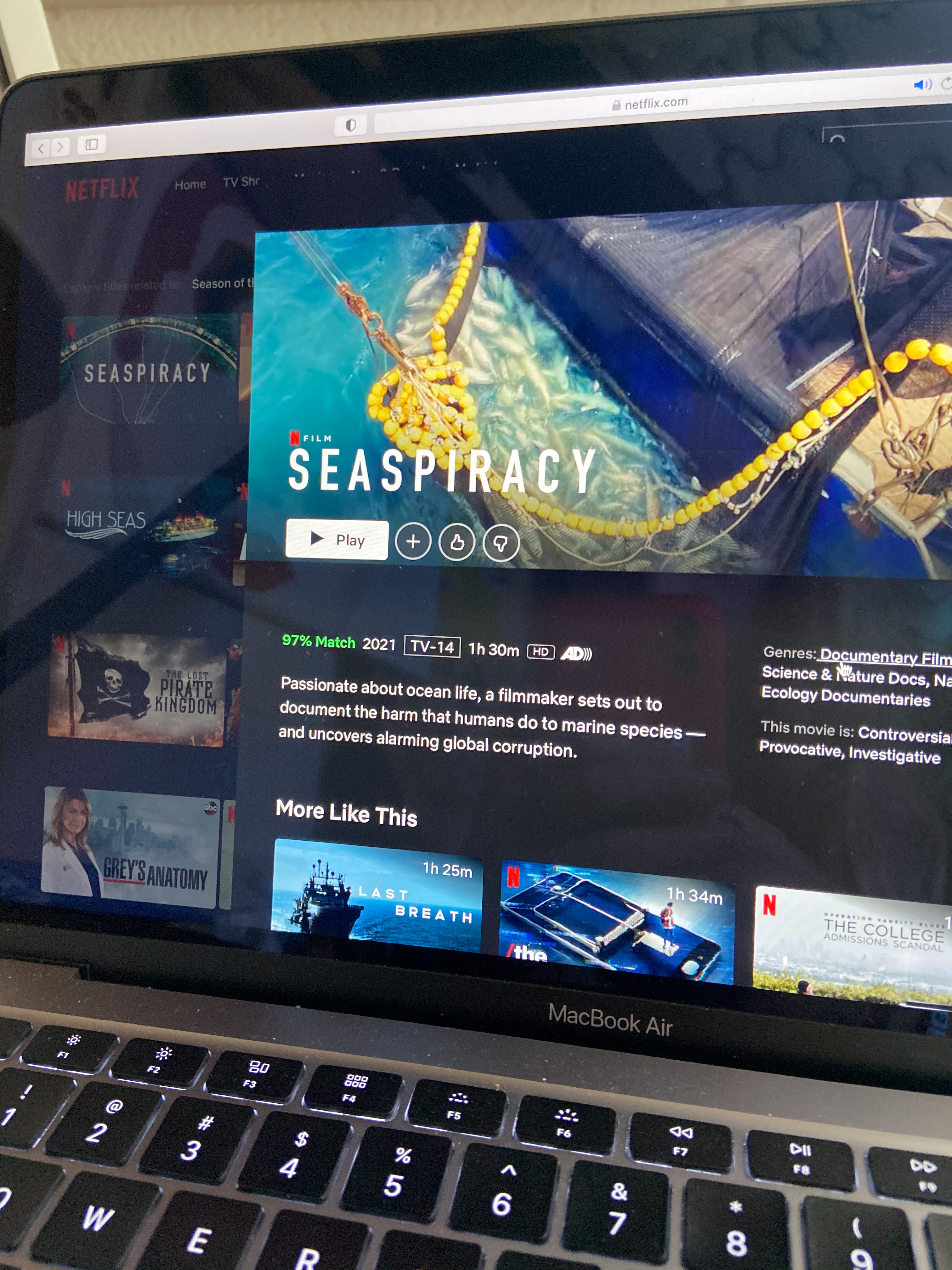Before reading this article, please know that it will discuss abuse towards animals and enslavement of people. Additionally, topics and facts included in the documentary will be included throughout the article.
Over the weekend, I watched the new Netflix documentary, Seaspiracy. Since the release of the film, I have seen several posts on social media concerning viewers’ eye-opening experiences. As someone who loves the ocean and sea life, I knew I had to watch it.
The documentary was a lot to take in because it was fact after fact after fact. But the information was interesting and kept my attention. British filmmaker, Ali Tabrizi, began this documentary in hopes to document his love for sea life, but before filming he began researching the environmental harm that humans are causing to the ocean and of that living in it. Tabrizi was seeing that numerous dead whales were washing onto beaches and their stomachs were full of fishing nets and plastic.
As the filmmaker and his friend were filming, they began finding more and more issues concerning the ocean. Starting off in Tiji, Japan, the filmmakers were met by police and were told to stop recording along with erasing the footage immediately. However, they were then able to see fishermen conducting a dolphin drive.
This is where the fishermen use their boats to corral dolphins into a small cove and begin killing them. The Japanese do this for the meat and because they believe dolphins are pests.
After this, the film moves on to discuss the same issue happening with whales and sharks. The animals are slaughtered by the hundreds.
The documentary points out how harmful this mass murdering of sharks and whales is to the ocean and for us.
Whales release phytoplankton which absorbs carbon dioxide. This is crucial to the current issue of climate change, and without whales, the world will not have phytoplankton to absorb the excessive amounts of CO2 in the atmosphere. The film additionally discusses the significance that sharks have in the ocean as they are able to maintain a balance in the food chain. It was shocking for me to learn that the commercial fishing industry in other parts of the world are enslaving their people to work on these ships. Some of the people who escaped their enslavement were interviewed anonymously and shared their horrific and unimaginable experiences.
Towards the end of the documentary, the filmmakers do not give a clear answer on how we can begin to fix the problems that are taking place involving the mass murdering of sea life and commercial fishing all over the world.
However, I do know that this generation of college students and those younger than us are passionate about seeking justice and a way to make the world a better place to live. Since the release of the documentary on Netflix, many organizations that support recycling and sea life are speaking out about the false claims made against them in the film. It’s hard to know which information to trust, which means it is necessary that we continue to conduct our own research if we want to fix this problem.
Even though the documentary is a little long and requires a lot of attention to keep up with the topics being discussed, it is a documentary that I will be recommending to my friends and others.
Photo by Kaily Paddie




